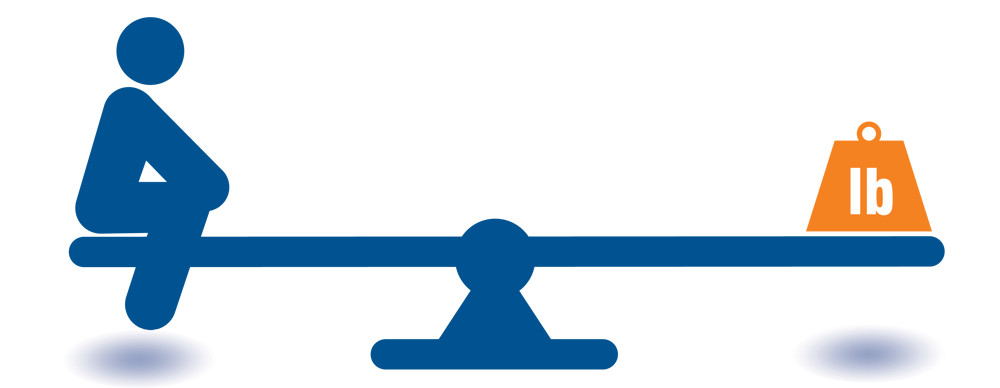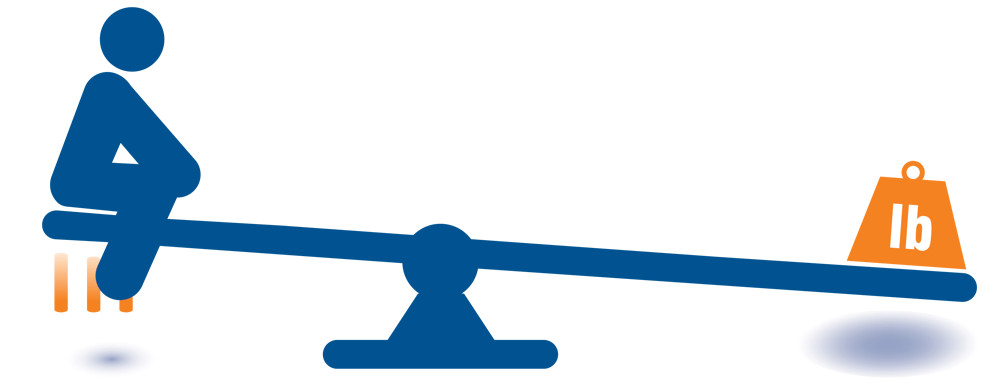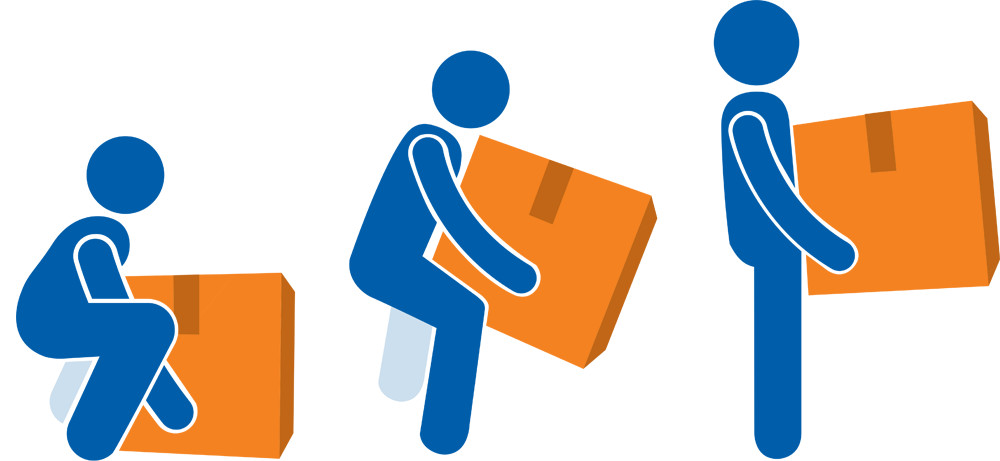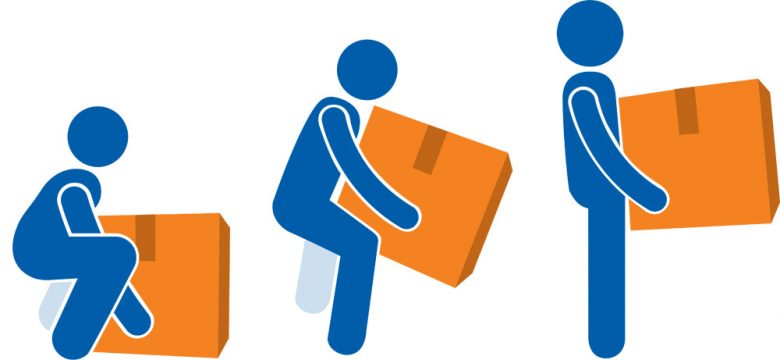

This is an excerpt from our free back injuries guide.
You don’t need to look any further than your local playground to see how small loads can have such a large impact on the back.
Seesaws are a lot like the human body. They have a stable centre and limbs that extend to carry sizeable loads. But seesaws have something that people don’t: perfect form 100% of the time.
The first image above shows a normal seesaw, with a child on one side and a weight to counterbalance on the other side.
The second image shows what happens if we increase the distance between the weight and the center of the seesaw. The child shoots up because the same weight suddenly exerts a lot more force.
The same thing happens when people use improper lifting techniques. Any time someone holds an object away from their body they need to use a lot more muscle power. Lifting above their head or bending or twisting to pick an object also requires extra exertion.
Unlike a seesaw, the muscles in the human body can get tired quite quickly and when this happens the risk of a strained back increases.
There are no new developments in safe lifting practices and proper body positioning because the essential technology hasn’t changed, and in this case we’re dealing with a very old piece of equipment—the human body.

Knowing the proper technique isn’t enough.
Even if we know the proper way to position our bodies and lift when we work, it’s easy to make an error in judgment or forget to use proper posture when we’re in a rush, are frustrated or tired, or get complacent.
Many of us have been told so frequently to lift with our knees that we can easily become complacent. Everyone is at risk of injury due to bad body positioning and lifting technique caused by complacency and bad habits.
Read Re-thinking Back Injuries: Improving Lifting Decisions and Reducing Back Pain in Your Workforce for a full overview on how your safety program can effectively prevent back injuries.

